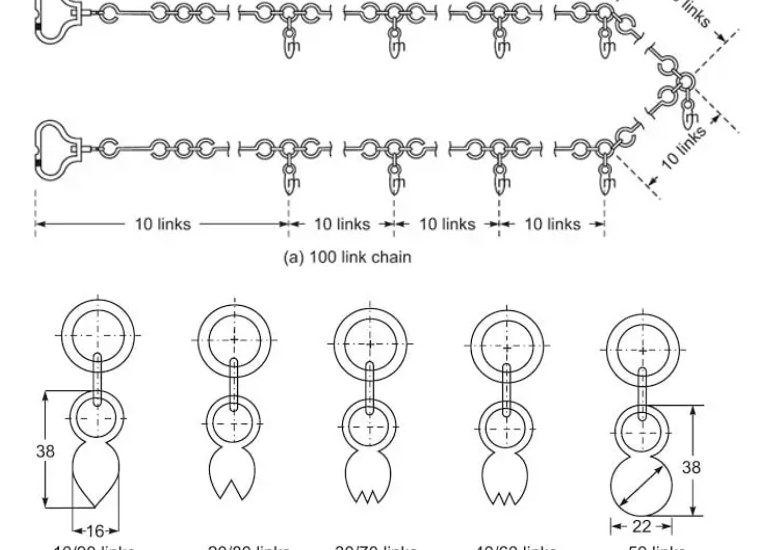In Surveying, linear distances are measured with chins and steel bands. Chains could be divided into the following 5 types as per units of measurement.
-
Metric Chain
Metric chains are the most widely used in India for linear measurement. These chains are available in 10m, 15m, and 30m lengths. In these types of chains, the length of 1 link is 20 cm.
Metric chains are made from galvanized mild steel of 4 mm thick wire. Metric chains are bent into a loop at the end and connected with each other by means of three circular rings.Metric chain comes with brass rings at every one-meter interval. It also has brass tallies at every 5-meter interval.
-
Revenue Chain
This chain is mainly used in cadastral surveys. The Revenue Chain is 33 feet long consisting of 16 links. Thus, this chain is used for the work of measuring small areas.
-
Gunter’s Chain or Surveyor’s Chain
Gunter’s Chain, developed by English clergyman and mathematician Edmund Gunter in 1620, is one of the earliest and most well-known types of surveying chains. These chains are 66 feet in length consisting of 100 links each of 0.66 ft (or 7.92 inches). Here, it is worth to note that area covered by square made up of length and width equals 10 chains is equal to 1 acre.
10 chains = 1 furlong and 8 Furlong (80 chains) = 1mile -
Engineers Chain
Engineers Chain is 100 feet long comprising 100 links each of 1 foot. This chain conveniently measures length in feet and inches.
The Engineer’s Chain is typically made of brass or steel, and its length can be easily adjusted by adding or removing links, making it adaptable for various surveying tasks.
-
Steel Band and Band Chain
Steel Bands are more accurate than chains being available in 20 m and 30 m lengths. Steel bands and tape measures are highly flexible and can be wound onto a reel for easy storage and transport. They offer greater precision than traditional chains and are often marked in feet and decimal fractions or meters. They are 12 to 16 mm in width and 0.3 to 0.6 in thickness.
Equipment Used for Chain Surveying
The following are the essential instruments for chaining
- Ranging Rods- For linear measurements, a minimum three ranging rods are needed. Ranging rods are painted alternatively, from top to bottom, either red and white or black and white for better visibility.
- Arrows- These are used to mark a location on the ground during surveying, and are made from iron and have sharp nibs.
- Pegs- They are made from wood and used to permanently mark a location on the ground.
Read Also-
Methods of Plane Tabling – Explained in Detail
Superelevation In Highway Design – Transportation Engineering
Classification of Roads in India as per Nagpur Road Plan
FAQs
5 m and 10 m metric chains have tolerance of ±3 mm. 20 m metric chain has tolerance of ±5 mm. A 30 m metric chain has tolerance of ±8 mm.
